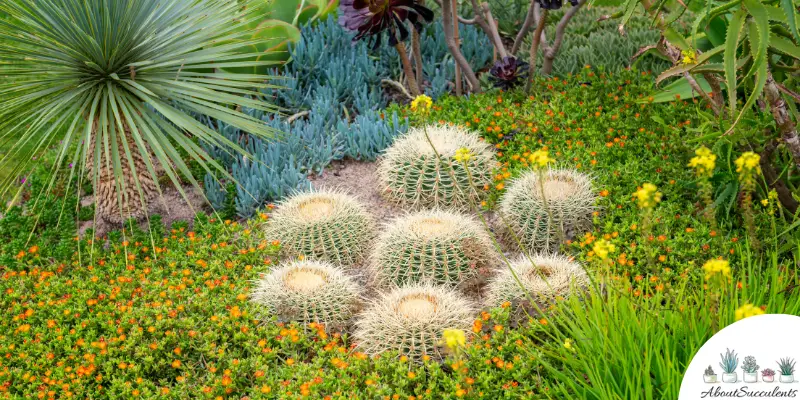
Succulents are popularly grown as indoor plants because they add color and life to any room in the home. Plus, they make interesting conversation pieces. But succulents can be as charming and enticing as outdoor plants.
With careful selection and proper arrangement, succulent plants can turn your garden into an eye-catching masterpiece that elicits “wows” and social media snapshots.
In this article, we’ll give you the best types of succulents you can plant in your garden. As a bonus, at the conclusion, we’ll share the 3 things you need to keep in mind when growing succulents outdoors.
Best Types Of Outdoor Succulents
Succulents are durable plants that can thrive in different weather conditions. However, if you live in a region where the temperature can drop near-freezing temperatures, it would be best to plant your succulent in a pot that you can move inside your home.
Growing your outdoor succulent in a pot will also benefit those who live in areas where the weather can be scorching hot. Succulents can survive dry spells but exposure to the rays of the afternoon sun can burn their leaves.
If you prefer to plant your succulent in a garden bed, just make sure that its location gets 4 to 6 hours of the morning sun. Succulents store water in their leaves and stems and grow better with little watering.
Now, let’s move on to the best types of succulent plants you can consider for your outdoor garden.
Echeverias
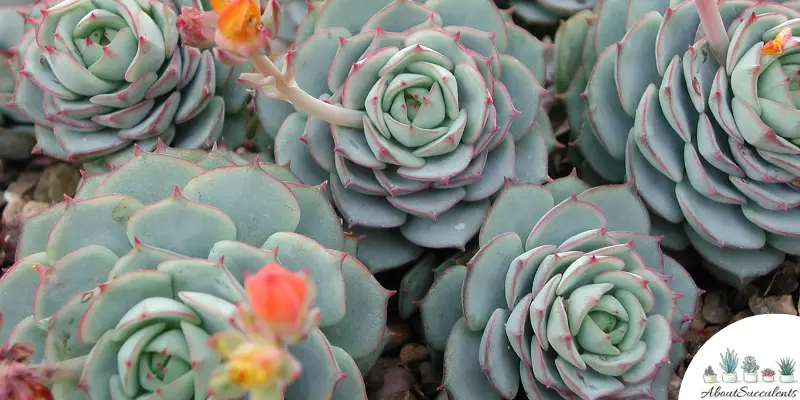
Echeverias is a succulent that is native to Mexico and is commonly found in Southern and Central America.
Echeverias thrive in USDA hardiness zones 9 to 12. Thus, if the temperature in your region experiences drought and humid conditions, the Echeveria will be a perfect addition to your outdoor garden.
This type of succulent can also be planted in places that have winter season. However, Echeveria is only mildly tolerant to frost and must be moved indoors when the temperature reaches freezing point.
When planting Echeveria outdoors, look for a place that receives 4 to 5 hours of direct sunlight every day. Avoid overwatering as this can lead to root rot. Only water the soil when it is completely dry.
Sedum
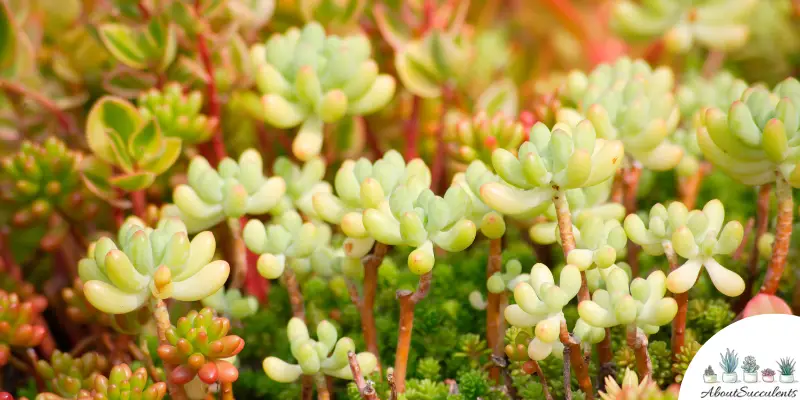
Are you looking for a type of succulent that looks amazing as ground cover? Sedum is a succulent that grows only a few inches but makes up for it when it spreads and creeps outward. Sedums make an excellent addition to a rock garden and along pathways.
There are also types of sedums that grow vertically and become tall clumps adorned with compact but beautiful flowers. Landscape artists use this sedum variety to accent border gardens.
You can plant sedum in partial shade but they grow better when given full sun exposure for up to 6 hours per day. If you live in a region that goes through long, harsh winters, planting Sedum in a location that gets regular exposure to full sunlight will improve its tolerance to frosty conditions.
Agave
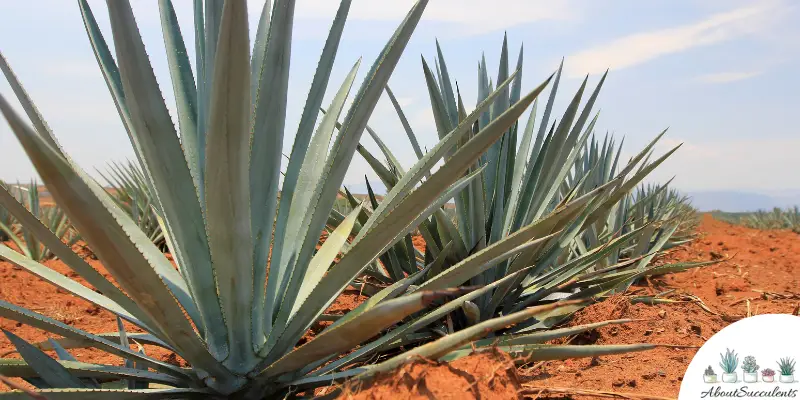
Agave is an eye-catching succulent that can be a sublime centerpiece in an outdoor garden or as a potted plant. Temperate regions that don’t have winter can enjoy these wonderful succulent plants 365 days a year.
If you experience sweltering heat, it would be best to plant Agave in a location where it can have partial shade for up to 6 hours. For places that do have winter, choose the Agave parryi variety which can endure USDA Hardiness Zone 5 conditions.
Succulent hobbyists and landscapers usually grow Agave in areas where guests commonly congregate such as the patio or swimming pool. Like most succulent plants, use well-draining soil when growing Agave and avoid overwatering.
Sempervivum
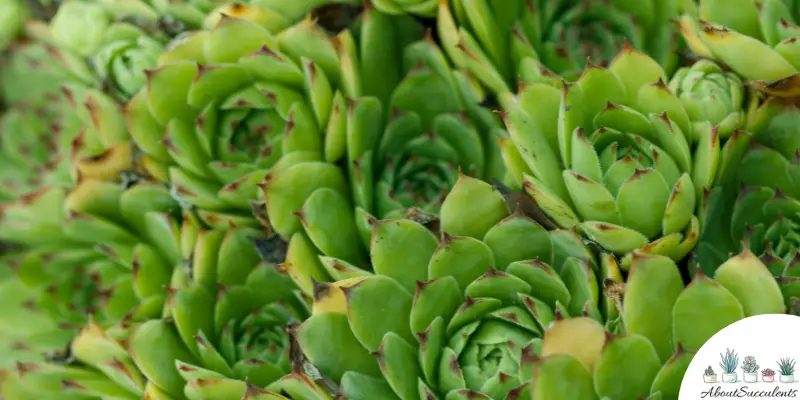
For horticulturists who live in regions categorized as USDA hardiness zones 4 to 9 or having both periods of drought and frost, add Sempervivum in your list of outdoor succulents.
To ensure the proper growth of Sempervivum, use gravelly or sandy soil. You can use clay soil but mix in coarse sand, lava rock, or pumice to improve its drainage properties.
Before the cold season sets in, transfer Sempervivum in a pot because the weather tends to prolong moisture. When the succulent is grown in a pot, moisture tends to escape soil much faster especially if you use a pot made of terracotta.
Crassula
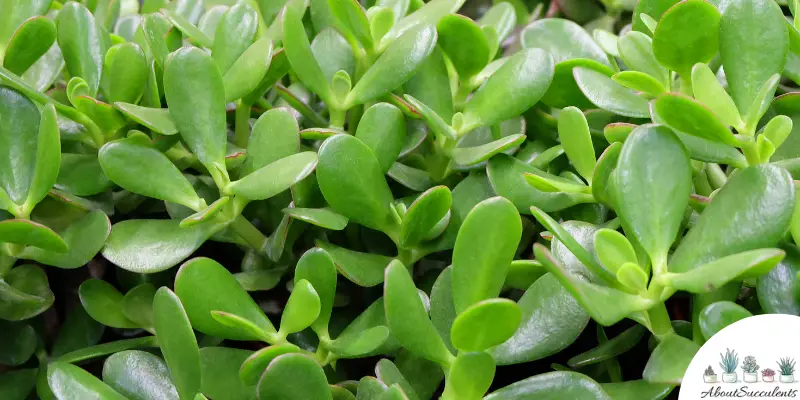
Crassula is the ideal succulent for horticulturists who are busy as bees and tend to forget things – such as watering the plant – because a typical day is loaded with activities.
Succulent plants require very little water and Crassula is a variety that can survive long periods of drought. Crassula ovata, which is sometimes referred to as Money Tree, Jade Plant, or Jade Tree, is one of the most popular species.
Plant Crassula in sandy soil and in a spot in your garden that gets partial to full sunlight for up to 6 hours every day. To maximize the lush green color of its leaves, it’s best to expose Crassula to full sunlight.
Haworthia
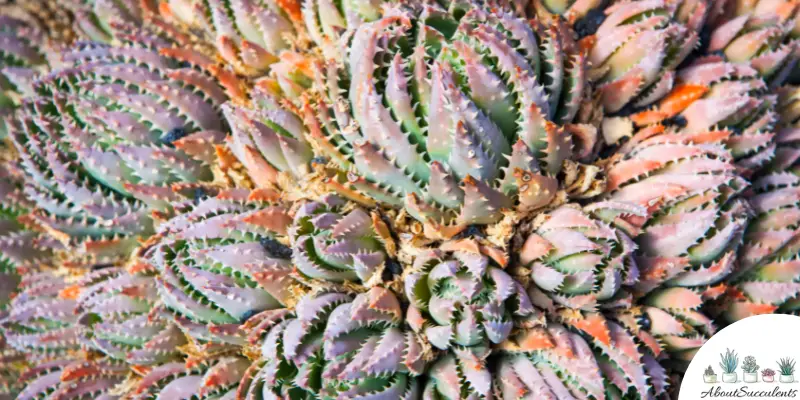
Haworthia can be found in most succulent growers’ outdoor gardens because it’s a no-frills plant to grow. Exposure to partial sun for 4 to 6 hours will help bring out the full spectrum of colors of this mesmerizing foliage.
This type of succulent is small and grows between 3-inches to 5-inches (7.62cm to 12.7cm) and it’s recommended to house Haworthia in pots that are shallow but wide and packed with well-draining sandy soil.
Haworthia grows best in regions categorized under USDA hardiness zone 11. Overwatering isn’t good for this succulent. Make sure the pot has a drain hole with a mesh cover to allow excess water to seep out.
Senecio
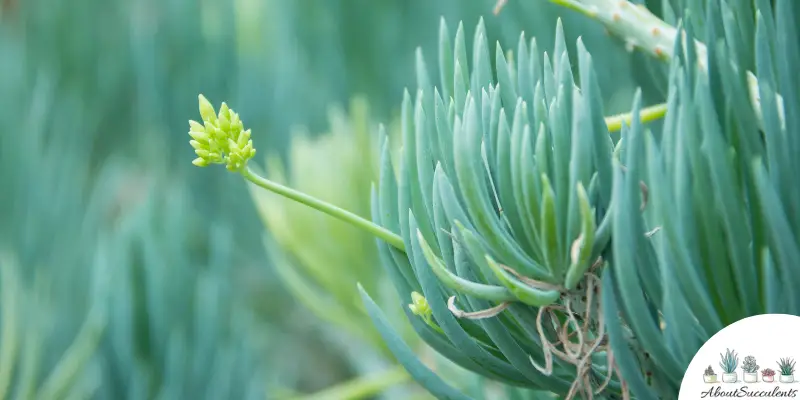
Senecio offers you a large family of more than 100 species to choose from. You can find varieties of Senecio that can be used as trailing plants or if you live in warmer climates, choose species that spread as ground cover or can be displayed in a rock garden.
Plant Senecio in well-draining soil and find a location in the garden that gets full sunlight for 6 hours. Senecio is a durable succulent that can tolerate extreme heat temperatures as well as limited periods of dampness.
If your region goes through frosty weather, it would be best to grow Senecio in a pot that can be transferred indoors.
Conclusion
Succulents make wonderful outdoor plants because they are easy to grow and care for. You only need to remember a few things to keep your succulent healthy and well.
First, succulents need regular exposure to full or partial sun for 4 to 6 hours. Without enough sunlight, the leaves can go through a process called etiolation where they stretch out, grow weak, and wither away.
As we discussed, some types of succulent plants such as Sedum and Crassula grow better when exposed to full sunlight.
Second, overwatering is the number one cause of succulents’ death. Giving the succulent water while the soil is still moist will immerse the roots in water for a long period of time and lead to rotting.
Water the soil only when it’s bone dry to the touch. To be sure, insert a stick an inch into the topsoil. If the end of the stick feels dry to the touch, you can give the soil water.
Lastly, your outdoor succulents will attract pests such as mealybugs and aphids. Spray it with neem oil to keep pests away and remove fallen leaves from the area.
Other than these 3 reminders, succulent plants don’t need much care or fussing over. After a hard day at work, grab a drink, pull up a chair in the patio and relax while admiring your beautiful succulent garden.
Last Updated on June 28, 2022 by Sofia Lara